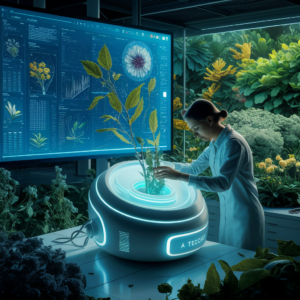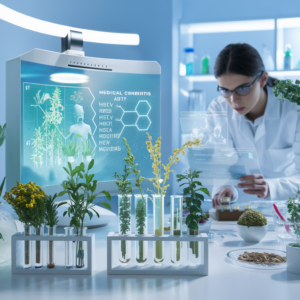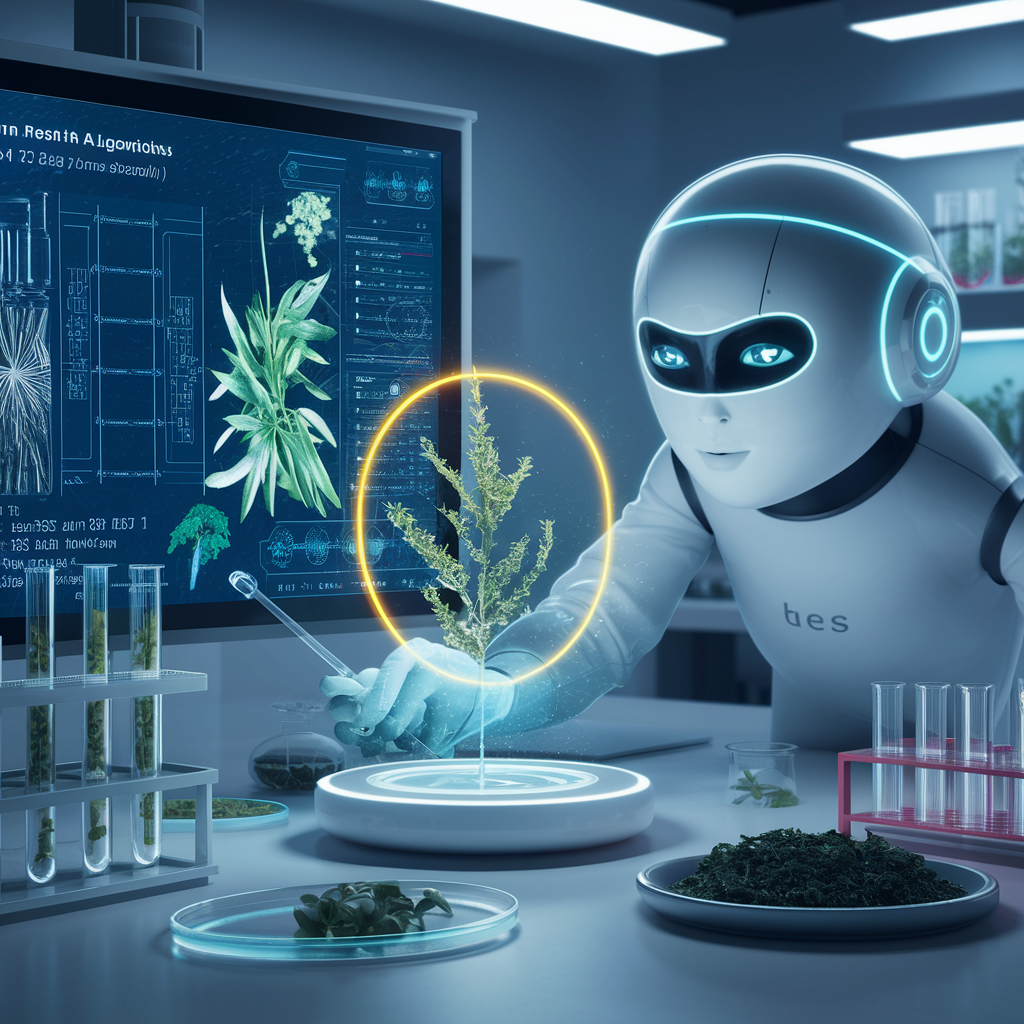Unveiling Nature’s Pharmacy- How AI Forecasts Medicinal Properties of Plants
In the realm where technology meets nature, a fascinating journey unfolds as scientists harness the power of artificial intelligence (AI) to unlock the hidden medicinal potential of plants. Imagine a world where the lush greens and vibrant blossoms around us not only provide visual delight but also hold the key to revolutionary medical treatments. This captivating fusion of science and nature is precisely what researchers are delving into, propelled by the promise of AI in predicting the medicinal properties of plants.
At the heart of this exploration lies the ambitious endeavor to construct the ‘plant tree of life’—a comprehensive family tree that spans the botanical spectrum. This intricate map serves as a guiding compass, directing scientists towards uncharted territories of plant species, each potentially harboring invaluable therapeutic compounds. With AI as their trusted ally, researchers embark on a quest to decipher nature’s intricate code, unveiling the remarkable healing properties hidden within the foliage.
The journey begins with the meticulous DNA sequencing of over 9500 flowering plants—a monumental feat that lays the groundwork for groundbreaking discoveries. This vast reservoir of genetic data serves as a treasure trove, enabling scientists to unravel the evolutionary tapestry of plants and glean insights into their medicinal attributes. Armed with this knowledge, AI algorithms sift through the genetic blueprints, identifying patterns, and correlations that elude the human eye. Through the lens of AI, the intricate dance of genes unfolds, offering glimpses into nature’s pharmacopoeia.

One of the most compelling applications of AI in this realm is the prediction of novel medicinal properties in plants. Traditionally, the search for therapeutic compounds has been a painstakingly slow process, often reliant on serendipitous discoveries. However, with the advent of AI, this paradigm undergoes a profound transformation. By analyzing vast datasets encompassing botanical characteristics, chemical compositions, and biological activities, AI algorithms can pinpoint potential candidates for medicinal exploration with unprecedented precision. This predictive prowess accelerates the pace of discovery, catapulting us into a new era of botanical medicine.
But the implications of this technological synergy extend far beyond the realms of healthcare. The ‘plant tree of life’ and its AI-driven insights hold profound implications for addressing pressing global challenges such as climate change, conservation, and food security. By unraveling the intricate relationships between plant species and their environments, scientists gain invaluable insights into ecosystem dynamics, facilitating targeted conservation efforts. Moreover, the identification of resilient plant species with potential medicinal properties offers a glimmer of hope amidst the looming specter of biodiversity loss.
In the realm of agriculture, AI-driven predictions enable the cultivation of crop varieties optimized for nutritional value and resilience in the face of environmental stressors. This synergy of technology and nature not only bolsters food security but also fosters sustainable agricultural practices, paving the way for a greener, healthier planet.

As we navigate the intricate tapestry of nature, guided by the beacon of AI, we stand on the precipice of transformative change. The convergence of science and technology propels us towards a future where the healing powers of plants are unlocked, and the bounties of nature are harnessed for the betterment of humankind. In this journey of discovery, AI emerges not merely as a tool but as a catalyst for innovation, illuminating the path towards a brighter, healthier tomorrow.
But amidst the optimism, challenges loom on the horizon. The integration of AI into botanical research necessitates a delicate balance between technological advancement and ethical considerations. As we delve deeper into the realm of predictive analytics, questions of data privacy, algorithmic bias, and equitable access to research findings come to the fore. It is imperative that we navigate these ethical complexities with vigilance, ensuring that the benefits of AI-driven botanical research are shared equitably across global communities.
Furthermore, the translation of AI-generated predictions into tangible medical treatments poses its own set of challenges. While AI can expedite the identification of potential therapeutic compounds, rigorous validation and clinical testing are essential to ensure their safety and efficacy. The journey from laboratory discovery to clinical application is fraught with obstacles, requiring interdisciplinary collaboration and regulatory oversight every step of the way. Nonetheless, with perseverance and dedication, the promise of AI in revolutionizing botanical medicine remains within reach.
In conclusion, the marriage of AI and botanical research holds boundless potential in unlocking nature’s pharmacy and addressing some of the most pressing challenges facing humanity. From predicting novel medicinal properties in plants to fostering sustainable agricultural practices, the implications of this technological synergy are profound and far-reaching. As we embark on this journey of discovery, let us tread carefully, guided by the principles of ethics, equity, and scientific rigor. Together, we can harness the transformative power of AI to usher in a new era of botanical medicine, where the healing gifts of nature are accessible to all.

